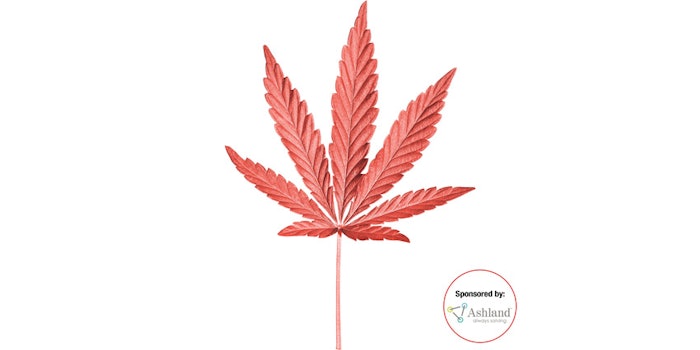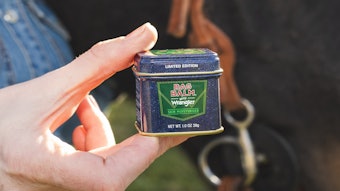
It is well known that the commercial cannabis market is quickly expanding into various consumer sectorsa, from food and beverage to supplements to beauty. The popularity of cannabis-infused products has been further encouraged by the December 2018 U.S. Farm Bill, which allows companies across the country to grow and source hemp-derived ingredients for commercial products, presuming they meet state laws.
Decoding Cannabis-driven Beauty
While many products boast inclusion of hemp and hemp-derived ingredients, there remains confusion around what these ingredients are. In a nutshell, there are two varieties of the cannabis plant: marijuana (Cannabis indica) and hemp (Cannabis sativa). Both contain many cannabinoids, the best known being tetrahydrocannabinol (THC) and cannabidiol (CBD).
THC, found primarily in marijuana, is psychoactive (produces a high), while CBD, commercially extracted from hemp, is non-psychoactive. CBD is, however, touted as having many benefits relevant to beauty and personal care, including pain relief or control/reduction of inflammation, calming/reducing anxiety and improving sleep, among others.
Cannabis sativa oil—also known as hemp oil, or hemp seed oil—is another popular cannabis-derived beauty ingredient. It contains CBD and minimal THC levels, is sustainable, and is promoted as have anti-aging and soothing properties.
What’s Driving Consumer Demands?
These benefits have made cannabis a huge trend in beauty and personal care, evidenced by the slew of new brands and products in the space. North American consumers are accordingly eager to try these products.
In 2018, A.T. Kearney conducted a survey of 2,000 North American consumers from various economic and demographic groups with awareness of the term “cannabis.” According to the survey, 76% of consumers would try a legal, cannabis-infused, therapeutic product that does not produce a high, and nearly half of those would specifically try a cannabis-infused beauty product.
CBD’s popularity in beauty has emerged around two key trends: natural beauty/ingredient transparency and wellness/self-care. This resulted from consumers being more conscious than ever of the link between cosmetic ingredients and health and their increasing association of beauty products, especially those with natural ingredients, with their own health and wellness.
Consequently, these shoppers increasingly seek out products that are free from what they perceive to be unhealthy ingredients (e.g., parabens) or unsustainable materials (e.g., exfoliating microbeads). It’s no surprise, then, that specific product ingredients, as opposed to the product names themselves, were the largest search drivers among beauty products, amounting to 1 billion Google searches in 2018, 60% of which were for natural ingredients.
Finally, because consumers are more informed on ingredients and their benefits than ever before, they are wary of product claims and efficacy.
Indie Beauty’s CBD Edge
In response to these trends, indie CBD beauty brands have positioned their products as part of consumers’ self-care ritual, advocating for the use of their products in conjunction with self-care activities like meditation, yoga and napping. CBD has been put in the center of this story, with sections of brand websites dedicated to detailed descriptions of CBD and other botanicals and their benefits.
In this way, for the first time, cannabis is being promoted as an elevated, luxurious product, with indies taking inspiration from prestige brands. Some emulate millennial and Gen Z favorites like Glossier and The Ordinary with minimalist-cool, Instagram-friendly packaging. Others take inspiration from the beautiful, ornate packaging of large prestige brands, which feel familiar to ageless consumers. Scroll through the Instagram feeds or websites of these indies and you will find artistic, elegant creative assets that transport you to beautiful oases and luxurious spas.
Brands as Educators and Product Curators
Because the cannabis beauty trend is still nascent, there is already a proliferation of indie brands taking the opportunity to educate and curate products for consumers. Many brands dedicate portions of their website to “CBD 101” and other topics. Select indies like Fleur Marché, Poplar and Standard Dose take this a step further as curators by reviewing and testing products and creating multi-brand marketplaces that allow consumers to navigate this new space.
The Opportunity for Legacy Brands
While indie brands and platforms have put a lot of work into educating and curating for the uncertain consumer, will their efforts be enough to take CBD beauty mainstream? Or will this only happen when established brands and retailers get involved?
Large legacy brands and retailers have the opportunity to be educators and curators of cannabis beauty, roles they have traditionally taken on with past beauty trends. According to the A.T. Kearney survey on cannabisb, 72% of consumers think brand name is important in assessing the quality and safety of cannabis-infused products. And 89% of consumers said that if a large, well-known company were associated with cannabis, their perception of it would improve or be unchanged.
However, established multi-brand companies are currently approaching the trend cautiously, placing slow, safe bets on cannabis beauty by integrating ingredients into a few products in select brands (typically those aligned to the natural beauty trend). Products like Origins Relaxing & Hydrating Face Mask with Cannabis Sativa Seed Oil (Estée Lauder Companies), Kiehl’s Cannabis Sativa Seed Facial Oil Herbal Concentrate (L’Oréal) and Fresh Cannabis Santal Eau de Parfum (LVMH) represent some of these safe bets. These products notably do not contain CBD but do play into the larger hemp trend.
If they do not organically expand their portfolio to include CBD products, large multi-brand companies can be expected to watch indies closely as potential acquisition targets. But with high-growth beauty startups trading at tech-like multiples, does a large brand risk being late to the game and paying a future premium on indie brands? Would large companies do better to acquire indie brands now and incubate them, bringing CBD beauty into the mainstream rather than waiting for the indies to do it themselves?
Retail’s Changing Attitudes
Up until recently, established retailers have been playing it safe as well, slowly introducing cannabis-infused products from established brands into their assortment. However, high-end retailers have recently shifted their focus to include indie CBD beauty brands.
Specialty retailers Sephora and Ulta have been introducing indie brands like High Beauty, Lord Jones and Cannuka since the end of 2018. In early 2019, high-end department store Neiman Marcus introduced an online CBD trend spotlight, and Barney’s New York introduced a luxury cannabis lifestyle shop in its Beverley Hills flagship.
Mass retailers are following suit, with major launches set for mid-2019. Seventh Sense, which markets CBD skin care products that are generally priced at less than $30, plans to launch more than 100 kiosks in Simon shopping malls, and CVS and Walgreens will be launching CBD-infused skin care products in thousands of locations.
Where to Begin
Large beauty brands that want to take their fair share of the cannabis-in-beauty market must immediately think about how to integrate cannabis into their business:
- Which cannabis-infused products fit into their existing brands?
- Should they develop new formulations or find a way to incorporate cannabis into existing ones?
- How can they market them to resonate with both core and new consumer demographics?
- Do new products require new business models, e.g., direct-to-consumer or subscription?
- Who should they partner with to ensure a consistent and quality supply of commercial cannabinoids?
While there remain uncertainties in this space, it is generally accepted that CBD beauty will continue to grow and penetrate the beauty mainstream. Indie brands are already making a name for themselves in what will likely become a big piece of the beauty industry’s future.
Large companies can capture their fair share, accelerate mainstream adoption of CBD beauty and shape what its future will look like—but to do this, they need to join in now. This is still a white space; it’s time to draw in it.
The authors would like to thank Kyla Balkan, Wendy Yu and Andrew Furash for their contributions to this article.
Footnotes:
a“The Next Gold Rush: Cannabis and Consumer Products,” www.atkearney.com/consumer-goods/article?/a/the-next-gold-rush-cannabis-and-consumer-products
b“The Cannabis Opportunity,” www.atkearney.com/consumer-goods/the-cannabis-opportunity
Author bios:
Patricia Hong ([email protected]) is a partner in the consumer and retail practice of global strategy and management consulting firm A.T. Kearney and leads its beauty and luxury division.
Flavia Carvalho ([email protected]) is a manager in A.T. Kearney’s consumer and retail practice and specializes in the beauty industry.











